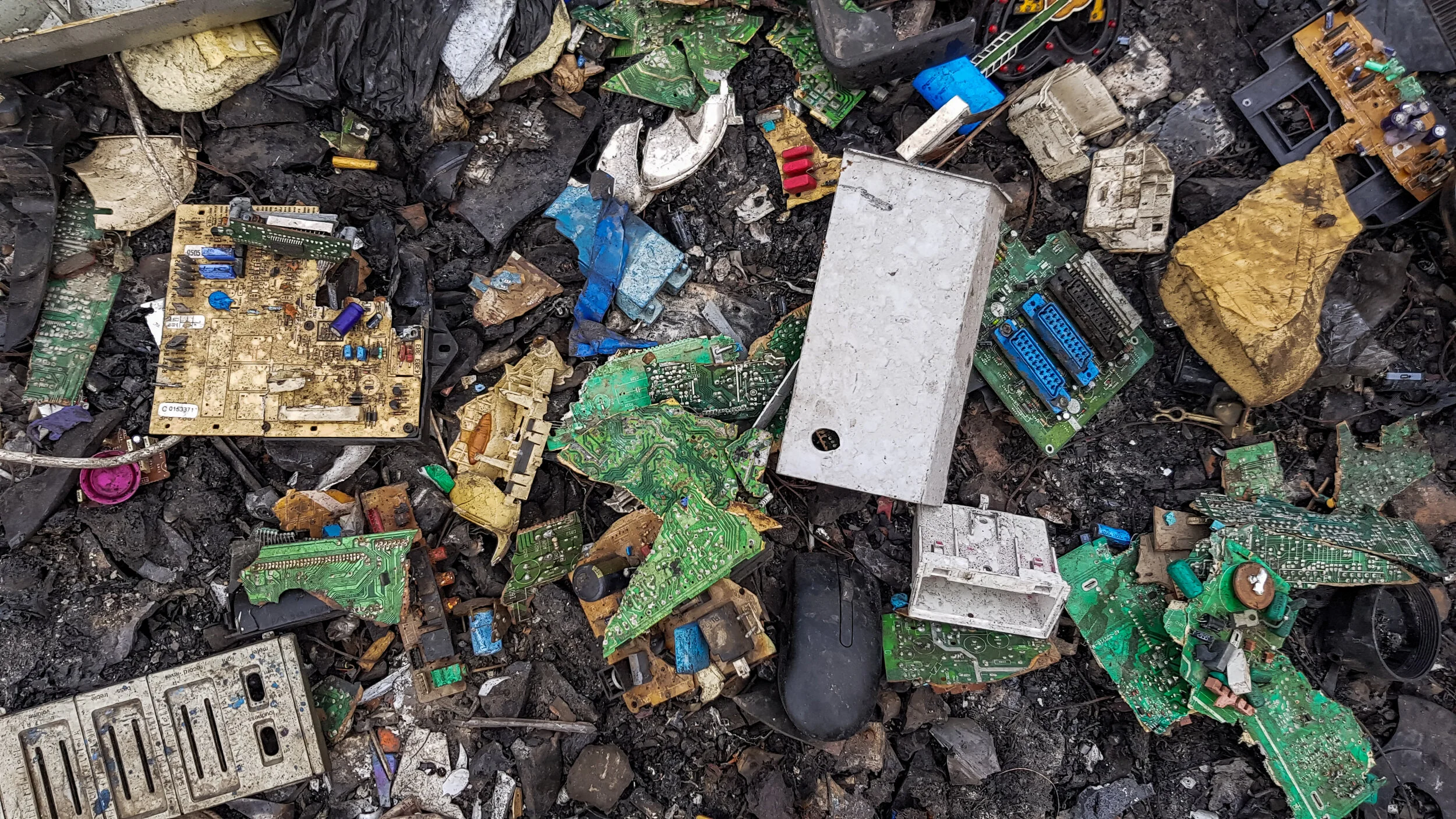Spotlight: E-Waste in Ghana
The Agbogbloshie (or Old Fadama) scrap yard in Accra, Ghana, accumulates an enormous amount of e-waste ranging from vehicles to refrigerators to cell phones. The country imports about 150,000 tons of used electronics per year with a large portion of the e-waste in Ghana scrapyards coming from West African countries when electronic goods are damaged in transit (Yeung, 2019). A common misconception is that e-waste is simply dumped immediately into scrapyards in low-income countries like Ghana. In reality, many shops around Agbogbloshie buy broken electronics for parts to fix other machines (Minter, 2016). Anything unsalvageable is sent to the dump where young migrants pick through to find valuable metals and sellable parts (Minter, 2016).
There are a variety of health concerns that rise out of the e-waste scrapyards. Tire fires are set to burn away useless parts of tires to get the metal, releasing toxins into the air that create terrible health issues like lung cancer and asthma (Yeung, 2019). The pollution created by piles of e-waste directly affects food sources at markets in Accra as well. The Bloomberg article by Patrick Yeung claims, “The Agbogbloshie area is home to one of the largest food markets in Accra, and haggard livestock roam freely and graze on the dumpsite” (Yeung, 2019). Workers in the Agbogbloshie scrapyard are putting their health and safety at risk to earn a meager living selling the items found in the e-waste dump.
The Agbogbloshie Makerspace Project (AMP) is a project created by DK Osseo-Asare and Yasmine Abbas to help workers within the Agbogbloshie scrapyard to improve conditions and provide meaningful education. The creators of AMP set up in Agbogbloshie for months and interviewed many scrappers to determine what solution would best support the local community’s goals (Thomas, 2018). They saw that the people needed the income from selling the e-waste found in the scrapyard, so they decided to make this process easier and more comprehensive. Through the creation of a digital platform for smartphones, people working in the scrapyards are able to locate places to buy and sell their materials, communicate with each other, and learn about health and safety methods (Minter, 2016). In addition to this effort, AMP has created “AMP Spacecraft” as a way for young people to recycle e-waste by building their own spaceship. The program educates people on Science, Technology, Engineering, Architecture, and Math concepts, so they can recycle materials into meaningful creations (Thomas, 2018). AMP has many transformational programs and projects that aim to recycle waste material and provide opportunities for communities.
Written by Ashleigh Litcofsky
References:
Minter, A. (2016, January 13). The Burning Truth Behind an E-Waste Dump in Africa.
Retrieved October 02, 2020, from https://www.smithsonianmag.com/science-nature/burning-truth-behind-e-waste-dump-africa-180957597/
QAMP (2020, May 21). About. Retrieved October 02, 2020, from https://qamp.net/about/
Thomas, S., (2018, September 21). TED, Penn State and a makerspace in Ghana.
Retrieved October 02, 2020, from https://news.psu.edu/story/537864/2018/09/21/research/ted-penn-state-and-makerspace-ghana
Yeung, P. (2019, May 29). The Rich World's Electronic Waste, Dumped in Ghana.
Retrieved October 02, 2020, from https://www.bloomberg.com/news/articles/2019-05-29/the-rich-world-s-electronic-waste-dumped-in-ghana



